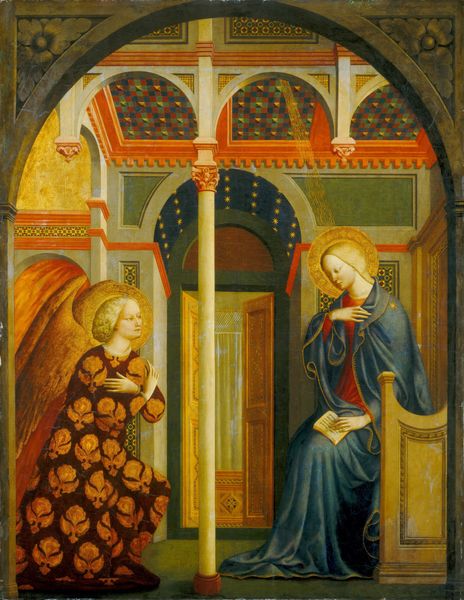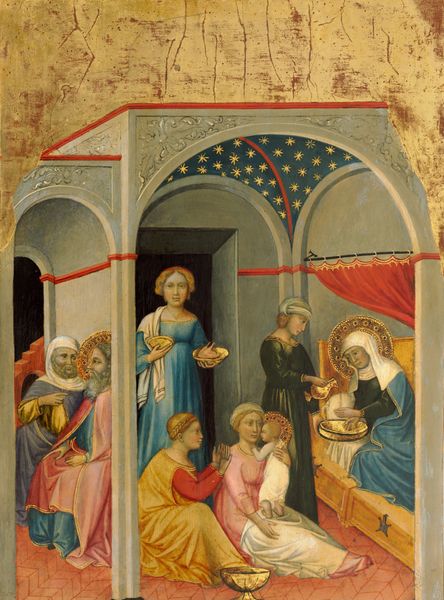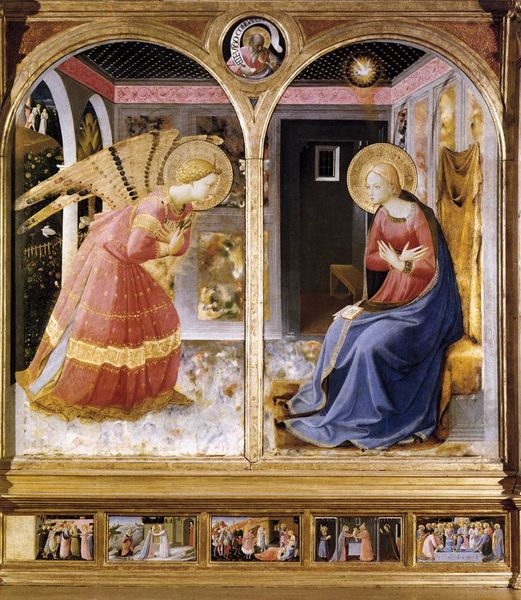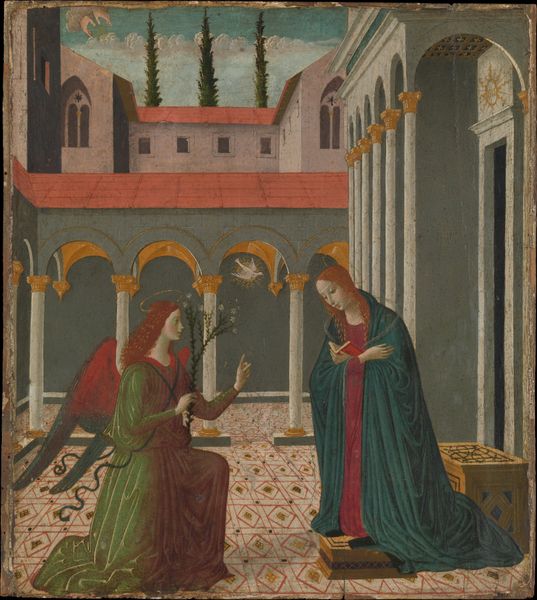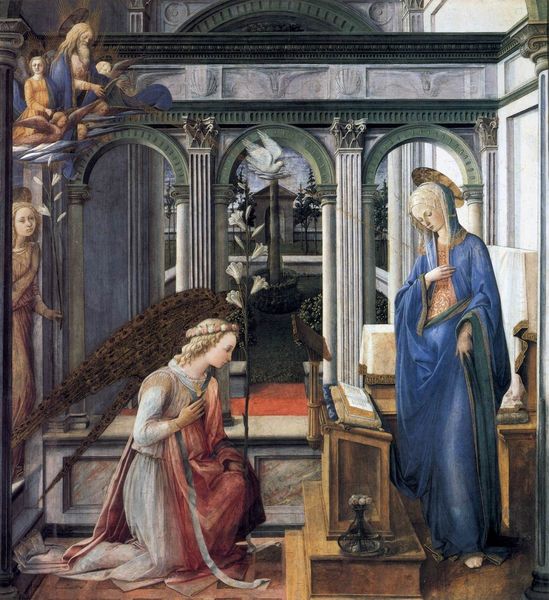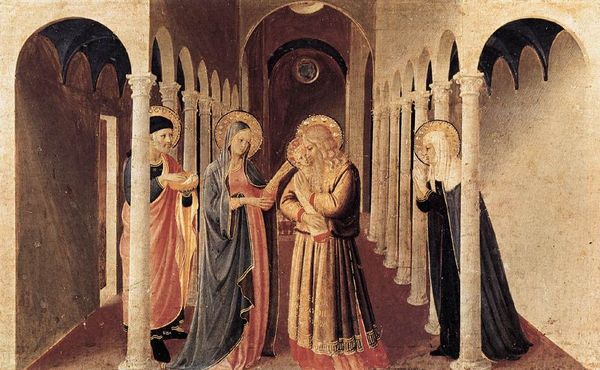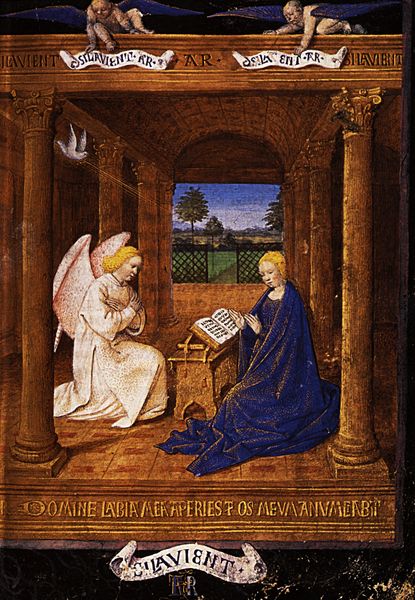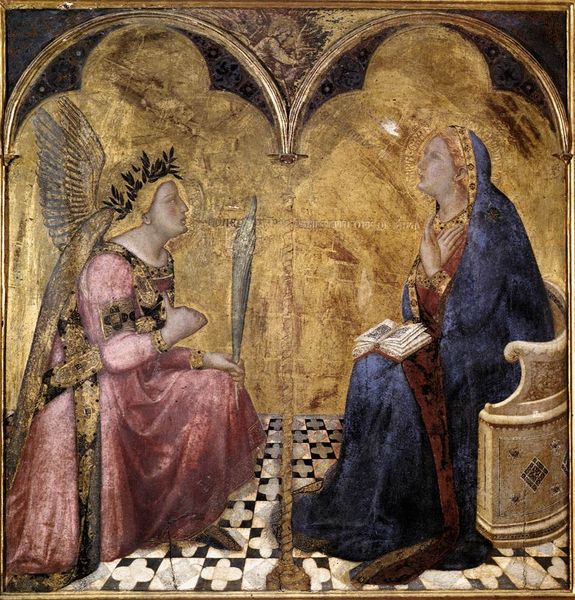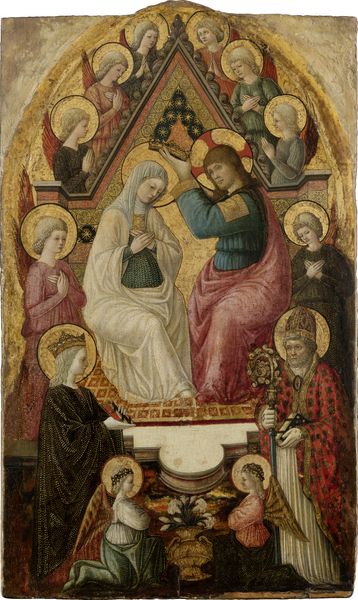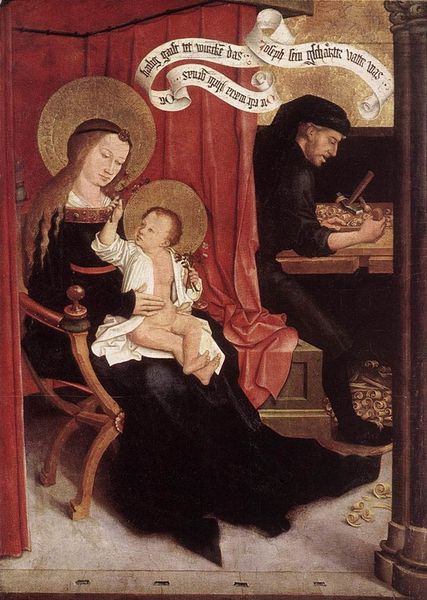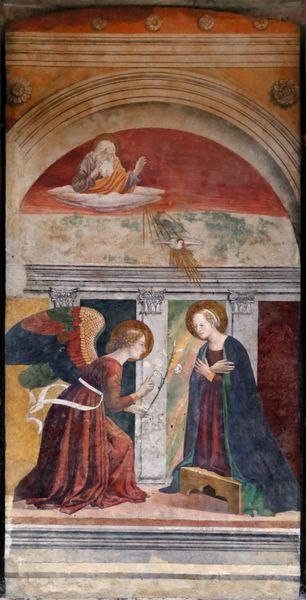
tempera, painting, oil-paint
#
portrait
#
narrative-art
#
tempera
#
painting
#
oil-paint
#
sculpture
#
landscape
#
holy-places
#
figuration
#
oil painting
#
christianity
#
painting painterly
#
history-painting
#
academic-art
#
italian-renaissance
#
early-renaissance
Copyright: Public domain
Editor: Here we have "The Annunciation," created around 1419 by Gentile da Fabriano, using tempera and oil paint. There’s something so serene and composed about this scene, almost theatrical. What jumps out at you about this piece? Curator: What strikes me is how Fabriano situates this sacred moment within a distinctly domestic, almost bourgeois, setting. Notice the intricate details of the architecture, the rich textiles, the precisely rendered furniture. It speaks to a shift in the way religious narratives were being presented to the public. How might a contemporary audience, accustomed to simpler depictions, have received such a lavish scene? Editor: That's a great question. Were these kinds of elaborate details intended to be aspirational? Curator: Absolutely. Think about the role of patronage. Who commissioned this piece, and what statement were they trying to make? It’s likely intended to align them with the divine figures. Further, this is a public declaration, a status symbol meant to demonstrate power and influence within the community, as much as it is about religious piety. What do you make of the beam of light emanating from above? Editor: I noticed that, how it cuts across the otherwise enclosed, private scene, suggesting the divine breaking into everyday life. It feels a bit disruptive, visually. Curator: Exactly! It interrupts the constructed reality of wealth and status. The painting encapsulates not only the spiritual narrative but the social and political climate of the time, reminding us that art always exists within a context. It becomes a historical artifact loaded with information. Editor: I see now; looking at the painting through a social lens really opens up a richer understanding. It’s no longer just a biblical scene, but a mirror reflecting the patron and society. Curator: Precisely. Now, when you look at other Early Renaissance works, you might start to see those threads of power and societal values woven in too.
Comments
No comments
Be the first to comment and join the conversation on the ultimate creative platform.

